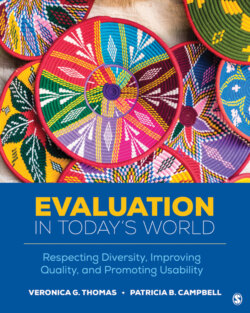Читать книгу Evaluation in Today’s World - Veronica G. Thomas - Страница 142
На сайте Литреса книга снята с продажи.
Federal Legislation and Great Society Programs
ОглавлениеDuring the 1960s, under Presidents John F. Kennedy and Lyndon B. Johnson, numerous social programs were initiated aimed at providing for the well-being of the nation’s citizens and protecting national prosperity. In response to a (then) national poverty rate of 19%, during his January 1964 State of the Union address, President Johnson announced the War on Poverty/Great Society programs, which included legislation that provided billions of dollars for reforms aimed at eliminating poverty and racial injustice via reducing unemployment, crime, urban deterioration, and inadequate access to medical care and mental health treatment. Systematic evaluation was mandated in several of the most important pieces of Great Society legislation. The Elementary and Secondary Education Act (ESEA) of 1965, for example, was passed as part of the Johnson administration’s War on Poverty, and it was designed to improve educational equity for students from lower-income families. This provided, for the first time, federal funds to school districts serving poor students. This legislation mandated that the government evaluate standards for student performance and teacher quality with resources set aside to undertake these activities. Legislative authorization also required evaluation of both the housing allowance program in the U.S. Department of Housing and Urban Development and the U.S. Department of Labor’s Comprehensive Employment and Training Act programs (Rossi & Wright, 1984).
Within five years, Johnson’s vision included the enactment of nearly 200 pieces of legislation and an unprecedented bold set of programs aimed at improving Americans’ everyday lives. Concomitant with the increase in social programs during the 1960s, there was also a rise in the demand to impose accountability requirements in order to determine how the funds were being used and the effects of these programs. As a result of the proliferation of these programs, by the end of the 1960s, evaluation research had become a growth industry (Rossi et al., 2004), and its applications grew substantially beyond government-financed programs and educational settings to other areas such as corporations, faith-based organizations, and foundations.
